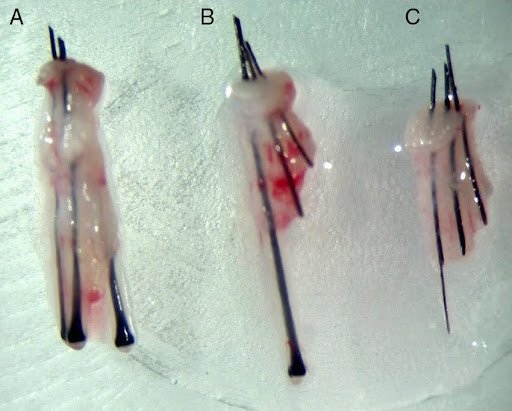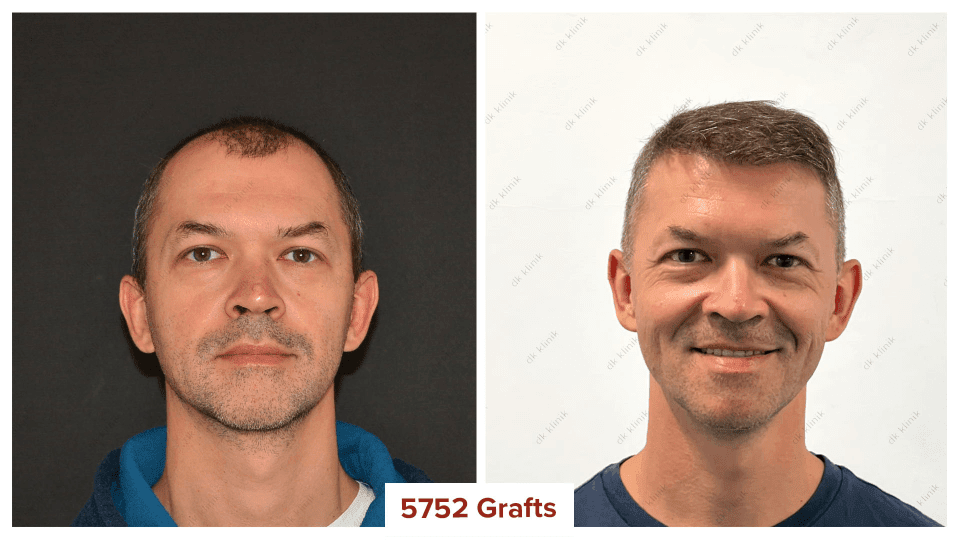Why 5000 Grafts Are Rarely Achievable in Hair Transplants

You decided to have a hair transplant in Turkey. You took your phone and started researching clinics. You liked a few of them very much and decided to send pictures of your hair on WhatsApp.
You sent your pictures, and the response came immediately:
"We have examined your pictures. We can transplant 5,000 grafts for you."
You are very happy. After all, the more grafts, the better the look, right?
Unfortunately, it's not that simple.
I wish it were.
If an unlimited number of grafts could be transplanted to everyone, all the transplanted grafts would grow, and everyone who had this procedure would be happy.
But not everyone is happy.
The issue we struggle with the most is the question asked by many prospective patients who contacted other clinics before us:
"Why do most clinics say they will transplant 5,000 grafts, but you only say 3,000 grafts?"
"Don't you trust yourself?"
Our answer is usually this: "We are confident. We know the truth, and we have to give you the right information."
Why Might 5,000 Grafts Be Unrealistic?
Transplanting 5,000 grafts in a single session is neither safe nor possible for most people.
In fact, only 8% of the hundreds of hair transplants we perform every year are suitable for a transplant of 5,000 grafts.
Because:
It is very rare for donor areas to be dense enough to provide this many grafts.
Receiving such a large number of grafts in a single session may increase the risk of permanent damage and scarring in the donor area.
Does More Grafts Mean Better Results?
More grafts may provide better results in some cases.
But this has its limits:
Example: According to the Norwood-Hamilton scale, 2,000 grafts are generally sufficient for a person experiencing 2nd degree hair loss.
However, a transplantation of 2,500–2,800 grafts may provide a more frequent appearance.
Planting 4,000 grafts in a scenario where 2,000 grafts are sufficient may create an unnatural result. In this case, existing hair may appear sparse.
On the other hand, transplanting more hair than necessary into a certain square centimeter disrupts the tissue blood supply in that area, and the grafts cannot be adequately nourished. This reduces the chances of the grafts' survival.
At more advanced levels of shedding (for example, grade 5, 6 or 7), it is more difficult to increase the number of grafts. In these cases, the option of “more grafts” is often limited.
More Isn’t Always Better: Prioritize Graft Health, Not Count
Being able to collect more healthy grafts is more important than simply collecting a larger number of grafts, as graft quality decreases in individuals with an insufficient donor area.
Therefore, collecting too many low-quality grafts is of no benefit and exposes the patient to additional risks. For this reason, it is crucial for your safety to choose a clinic that can collect more grafts without compromising the healthy ones you have.
For example, all three hairs in the graft shown in A in the image below are healthy.
In the graft shown in B, only the first hair is healthy.
In the graft shown in C, all three hair strands were damaged during collection, causing their structure to change and become compromised. Even if they are implanted, they will not grow.

Who is Suitable for a 5,000 Graft Transplantation?
People with high levels of hair loss may require a transplant of 5,000 grafts. However:
These people generally do not have a dense donor area.
Even in rare cases where the donor area is dense enough, harvesting this many grafts requires special planning.
In only 8% of our patients, donor area quality and frequency are sufficient to meet 5,000 grafts.
In other words, this is very likely...
If you don’t need 5000 grafts, it’s possible to collect 5000 grafts.
If you do need 5000 grafts, it’s not possible to collect 5000 grafts.
What are the alternatives?
Alternative solutions are available for people with high graft requirements:
- Multiple Sessions
More grafts in total can be obtained with the second or third hair transplantation. However, it is necessary to wait at least 1 year between sessions.
In the image below, you can see the results of our patient, who received a total of 5,752 grafts after two operations performed one year apart.

- Donor Site Evaluation
If the donor area is not dense enough, planning is done by protecting the transplantation area and the donor area.
What are the risks of 5,000 Grafts in a Single Session?
- Overharvesting
Gaps and scarring may occur as a result of excessive graft removal from the donor area.
This can cause both aesthetic and health problems.
- Risk of Necrosis and Infection
Due to the high number of grafts, tissue loss or infection may occur in the donor and transplantation areas.
Conclusion: Are 5,000 Grafts Really Necessary?
Transplanting 5,000 grafts in a single session is generally unrealistic for most patients. Instead, healthier and more natural results can be achieved with proper planning and alternative solutions.
If you would like to get more information about hair transplantation and find out the plan that best suits you, you can send us your photos.

